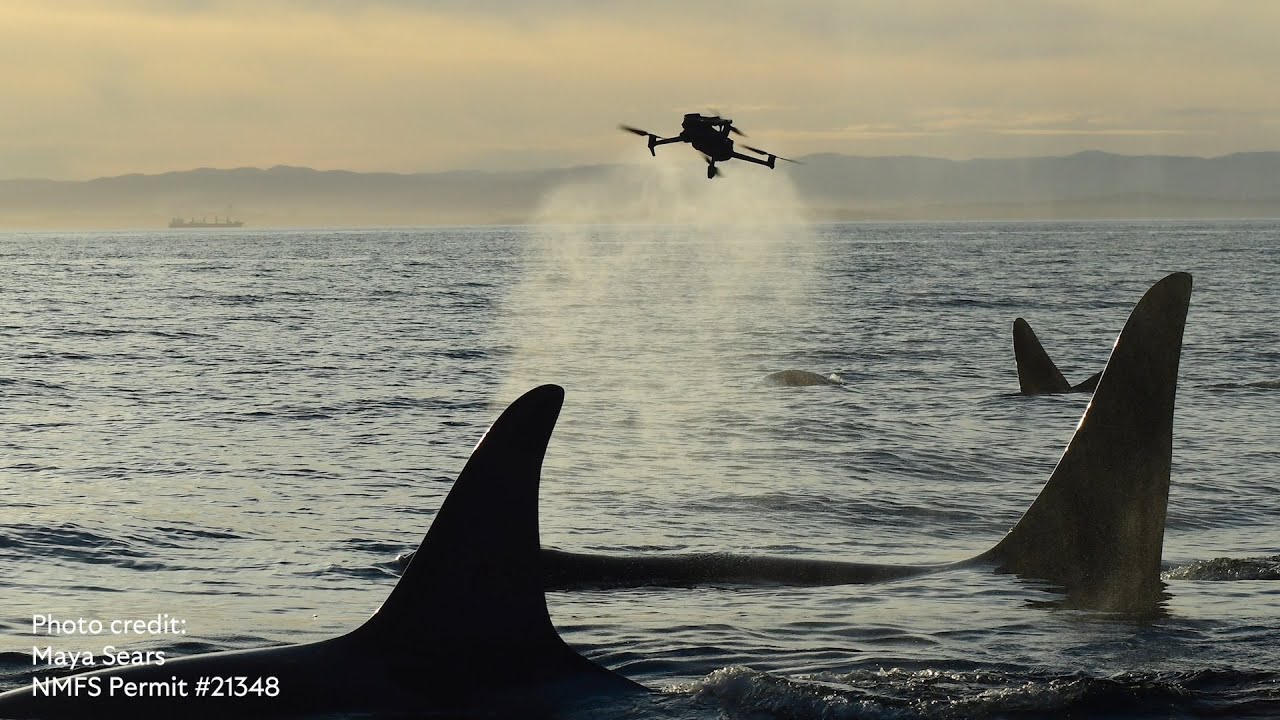– Unveiling the innovative technologies revolutionizing Southern Resident killer whale conservation
– A peek into the unique non-invasive data collection techniques employed to study killer whale health
– The synergy between SDZWA, NOAA, and other partners in safeguarding the future of these majestic marine mammals
Marine conservation has always hummed with the sobering cadence of urgency, particularly when pondering the plight of the Southern Resident killer whales. These sentient inhabitants of the sea’s depths, with less than 75 remaining, echo the somber tones of an existence imperiled. Efforts to preserve their legacy have catalyzed an assemblage of minds and resources, resulting in a campaign of conservation underpinned by innovation and collaboration.
When our gaze shifts seaward, we witness a cadre of individuals devoted to the wellbeing – of these aquatic dynamos, each playing a role in a symphonic movement. The plight of Southern Resident killer whales, mystic creatures whose ballet in the brine captivates and concerns us, has necessitated the forging of alliances. The notable collaboration between the San Diego Zoo Wildlife Alliance, NOAA, and a constellation of hitherto entities is a testament to the potency of unity in purpose.
Our approach to studying these cetaceans is akin to a dance, a choreography of respect and restraint. We have learned to listen without intruding and discover without disrupting. The technology we’ve embraced echoes our intent: to protect without perturbing. A particularly fascinating aspect of our study is collecting and analyzing the killer whale’s breath – an intimate yet unobtrusive whisper revealing the secrets within.
The entire operation could be likened to a ballet on the waves, where drones, our aerial dancers, pirouette through misty exhalations, capturing droplets like precious dew. These Petri dish-bound pearls are the elixir of knowledge. Once obtained, they are whisked away to the laboratories at UC Davis’ SeaDoc Society, transforming into a tapestry of data that paints a picture of the orcas’ health.
Such breath samples are rich in biological markers that offer a real-time reflection of the whale’s condition. Metabolites, hormones, pathogens – all captured in a momentary puff – like grabbing a snapshot of their living essence. It is a marvel of modern conservation tactics – obtaining the vital signs from the breath of behemoths.
The drones have become our eyes in the sky, extending beyond respiratory reconnaissance to thermal detection. Like seeking heat in an expanse of cold, we coax out the warmth of life from these ocean giants using thermal infrared cameras, placing the internal temperatures of the whales upon our analytical canvas.
The road to conserving the Southern Resident killer whales is paved with probing and poignant questions. What do their vocalizations tell us about their interactions? How does their health correspond with the fluctuating bounty of the seas? Do the temperature patterns indicate a broader ecological anomaly? We ponder, we probe, and we protect.
Every wave of data strengthens the sinews of our strategy. It feeds into complex maps that guide policy, bolsters the resilience of feeding grounds, and anchors the advocacy that the Southern Residents require. This is the undercurrent of our tale – an epic sprawled across the brine, punctuated by the breath of whales and the keen watchfulness of those who champion their survival.
You are called upon, dear reader, to embark on this voyage with us, gripped by the narrative of these monolithic creatures. If inspiration is the wind in your sails, let the story of the killer whale conservation swell the canvas of your curiosity. Their tale is twined with our own, and together, we chart a course towards hope.
The narrative now etched in your mind, do you feel the ebb and pull of the call for conservation? Do you envision the swathes of ocean nurtured through such concerted efforts? Take a moment, inhale deeply, and think of the future that we – as a collective – are painting with each action, each innovation, each breakthrough. Let the breath you release carry your commitment to a world where man and majestic beast can forge a sustainable coexistence.
It’s not just the fate of the Southern Resident killer whales that we hold in our collective conscience but the fate of our collective home – this grand and swirling blue marble. Herein lies the challenge, the call, the mission: to persist in our endeavors, innovate inspiring solutions, and foster an unshakable reverence for the essence of our natural world.
As you leave this chronicle, take the knowledge imparted and the cause’s emotional resonance. May the deep breaths you take henceforth remind you of those collected from the grand orcas, and may you exhale a whisper of hope for their future and the myriad of life forms that call our oceans home.
*****
Source Description
Deep breath in and exhale 💨
San Diego Zoo Wildlife Alliance (SDZWA) is part of a multi-partner effort led by the National Oceanic and Atmospheric Association (NOAA) to conserve Southern Resident killer whales. Less than 75 Southern Resident killer whales remain in their native waters, meaning that very limited data about the health of these animals has been collected.
SDZWA and our partners are gaining unprecedented insights into killer whale health and wellbeing using innovative technology. To avoid disturbing the Southern Residents, our team collects orca breath, which can be sampled non-invasively and provides a snapshot of every individual’s health.
Specially made drones locate the killer whales and fly through breath plumes to collect breath droplets on Petri dishes, all while remaining at a comfortable distance. The samples are then sent to a laboratory run by the UC Davis SeaDoc Society for further processing and analysis.
Trials are also conducted using thermal infrared cameras mounted on drones to measure the internal body temperature of killer whales.
Through these new technologies and methods, we can regularly gather and analyze comprehensive data about killer whales, which will help organizations like NOAA and local partners better understand their health.
Full Story: https://nyti.ms/3NG2nXB


